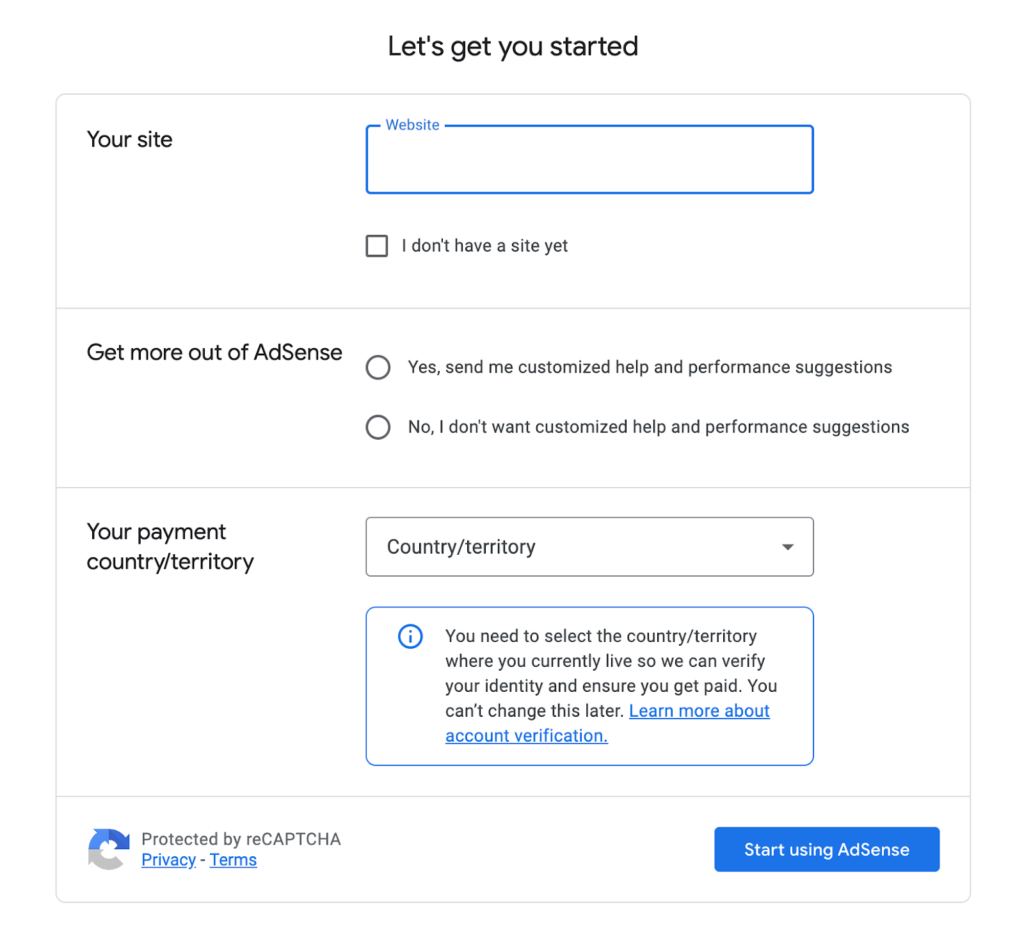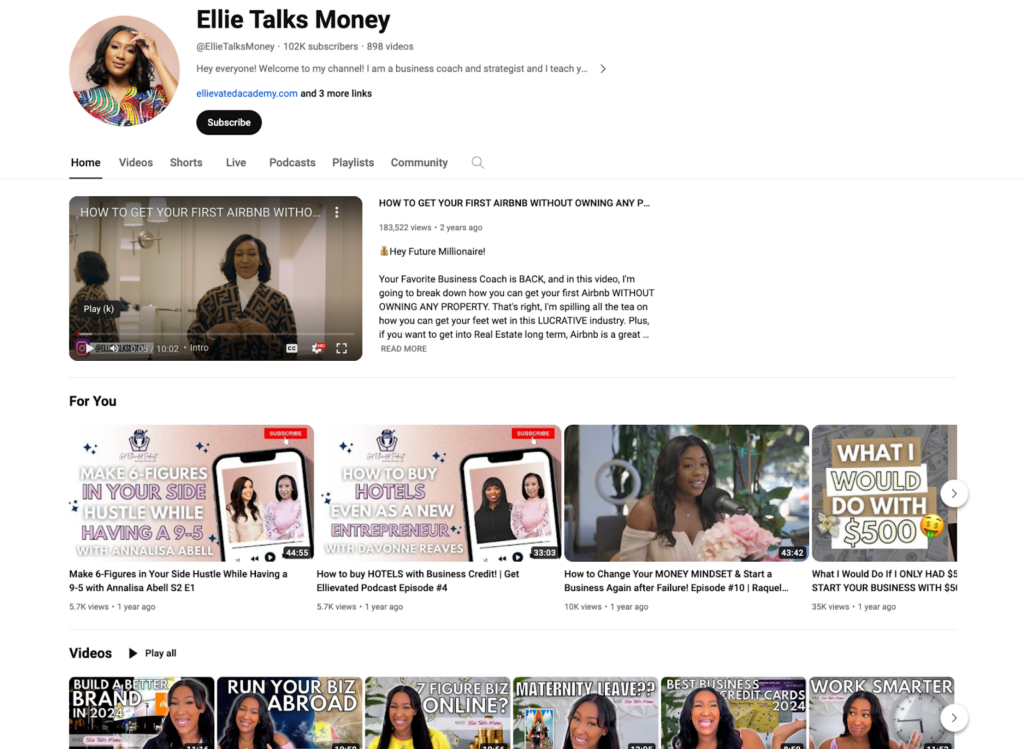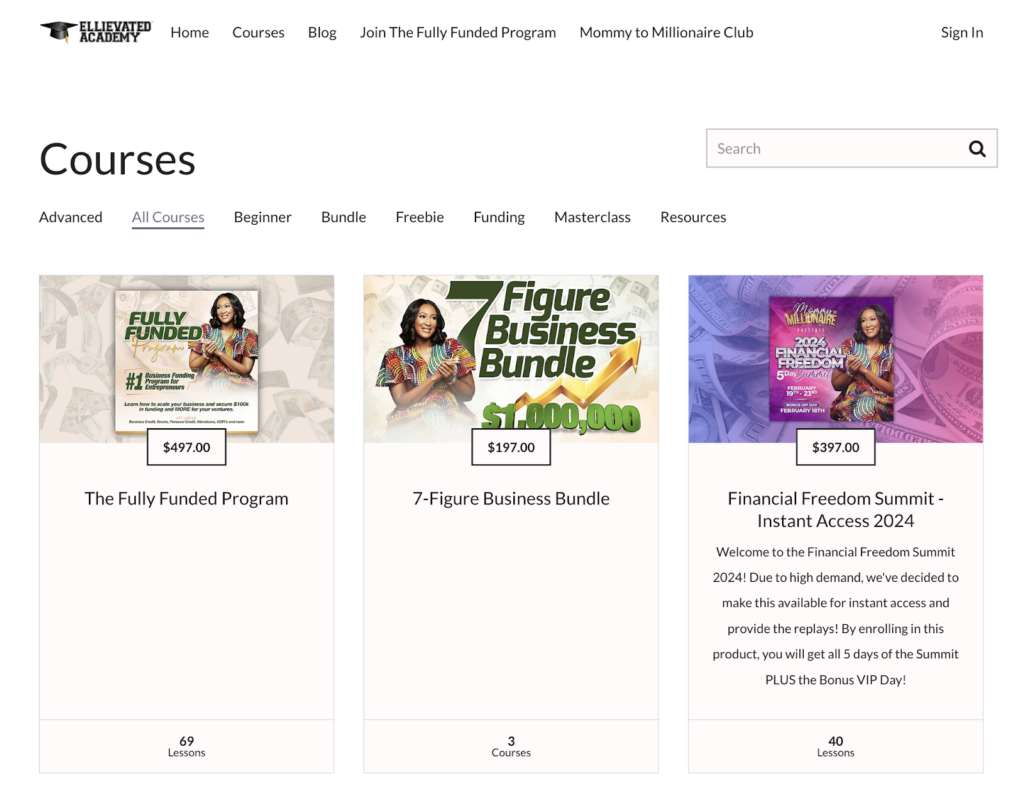You’ve set up your YouTube channel, you’ve started getting more views, your subscribers are growing and you can see your engagement going up. You feel like you’re making progress but at some point you really want to know — when do you start getting paid?
Whether you’re creating content for fun or looking to build a new income stream, it’s helpful to find out when you’ll start earning money from YouTube and what you need to do to get paid. Here’s everything you need to know, plus five tips to maximize your earnings.
Click to skip ahead:
- When do you start getting paid on YouTube?
- How do you get paid on YouTube?
- How to enable monetization on your YouTube channel
- Factors affecting earnings with YouTube Ads
- 5 ways to maximize your YouTube earnings
- Ready to earn money through YouTube?
- FAQ
When do you start getting paid on YouTube?
Unfortunately, you can’t start earning money the moment you set up your channel (that would be nice, wouldn’t it!). You’ll start getting paid on YouTube when you have at least 1,000 subscribers or 4,000 watch hours in the past 12 months. At that point, you can begin using the YouTube Partner Program to monetize your channel with ads.
That can feel like an insurmountable milestone, but consider the different ways you can reach 4,000 watch hours. You can have 4,000 viewers watching one hour of your content, 8,000 viewers watching 30 minutes of your content, or 240,000 viewers watching one minute each. So longer videos created for a really engaged audience might help you get there more quickly.
The more subscribers, viewers, or watch hours you have, the more your earning potential goes up. That’s because YouTube pays content makers according to how many times someone views an advertisement and how long they watch the ad for.
How do you get paid on YouTube?
There are a few steps you need to take to make sure you can earn money from your channel when the opportunity arises.
To start making money on YouTube, you need to sign up for the YouTube Partner Program and create a Google AdSense account or connect your existing account to your channel. You also need to live in a region or country where the YouTube Partner Program is available.
Once you’ve earned $100 on the platform, you can then begin withdrawing funds. With the average YouTuber earning between $2 to $12 per 1000 views, that means you’ll need a solid viewership or a few big hits before any income starts rolling in.
How to enable monetization on your YouTube channel
Once you meet the eligibility criteria (at least 1,000 subscribers and 4,000 valid public watch hours in the last 12 months), you can enable monetization on your YouTube channel. Here’s a step-by-step guide on the process:
Create an AdSense account
If you don’t have a Google AdSense account already, you’ll need to create one. That’s the only way you’ll be able to have ads in your videos.
- Visit Google AdSense and click Get started.
- Next, fill in some info. In the Your site field, put in the link to your YouTube page. Check the Yes, send me customized help and performance suggestions option (unless you don’t want to), and select the country you live in.

- Tap Start using AdSense.
Apply for the YouTube Partner Program
The YouTuber Partner Program (YPP) gives creators access to YouTube’s monetization features and Creator Support teams. It also allows revenue sharing from ads being served on your content.
To apply:
- Go to YouTube Studio and click Earn from the left-hand menu.

- You’ll see an option to apply for the YouTube Partner Program. Follow the prompts to start the application process. During the process, you’ll be asked to connect an AdSense account, so link the one you created in the first step.
- Once you submit your application for monetization, YouTube will begins the review process. It typically takes a month for YouTube to review your application, but it can be quicker or take longer depending on the volume of applications YouTube is processing and the complexity of the review your channel needs.
Sometimes, if there are issues with your application, such as needing additional information or having to re-verify details, YouTube might extend the review period.
Set up ad preferences
After YouTube approves your application, you’ll need to set up ad preferences. To do so:
- Go back to the Earn tab in YouTube Studio and navigate to Ads.
- Here, you can choose the types of ads you want to allow on your videos, e.g., display ads, overlay, skippable video ads, non-skippable video ads, and bumper ads.
- Select your preferences for where ads should appear on your videos.
Enable monetization for existing videos
To start earning revenue from your existing content, here’s what to do:
- Go to the Content tab in YouTube Studio and select a video (or multiple videos) you want to monetize.
- Click on the Monetization tab on the left side of the video editor and set the monetization settings for each video individually, choosing which types of ads should appear.
After setting up the ads on each video and people watch, your earnings will start trickling in. Here’s what the payment timeline looks like:
- Earning period. YouTube tracks your earnings over a full calendar month. For instance, any earnings you accumulate in July will be tallied at the end of July.
- Initial threshold. Before you receive your first payment, you must meet an earnings threshold of $100. If your account has less than $100, your earnings will roll over to the next month and will continue to accumulate until the threshold is met.
- Payment processing. Payments are typically issued through your AdSense account. The earnings for a particular month are finalized and posted in your AdSense account between the 10th and the 14th of the following month.
- Payment release. Once your earnings are finalized and if the $100 threshold is met, your payments will be released by AdSense between the 21st and 26th of the month. For example, earnings accrued in July would typically be paid out by late August.
Monitor your performance
After enabling monetization, it’s important to keep an eye on your performance and earnings. Use the Analytics tab in YouTube Studuo to track how much money you’re making and how viewers are interacting with the ads. Use the data you collect to ascertain areas where you need to adjust your content and ad settings to maximize your revenue.
Factors affecting earnings with YouTube Ads
After activating ad monetization on your YouTube channel, several factors can influence how much you earn through this method. Here are a few of them:
Viewer engagement and video watch time
When your videos are relevant, helpful, and engaging, people tend to watch them for longer periods of time. These videos tend to perform better in YouTube’s algorithms, potentially increasing visibility and ad impressions.
More watch time can also lead to more views and clicks, which in turn, increase earnings. Not to mention, longer videos have the opportunity to host more ads, particularly mid-roll ads.
More ads + longer watch time = higher earnings.
Ad types and placement
Different ad formats (e.g., display ads, overlay ads, sponsored cards, skippable and non-skippable video ads, etc.) can have different levels of profitability. For instance, non-skippable ads might earn more because viewers are required to watch them all the way to the end.
The placement of ads in your videos (like pre-roll, mid-roll, or post-roll) can also affect earnings. Mid-roll ads, which are placed in videos longer than eight minutes, can be particularly lucrative if the content is engaging.
Content type
Advertisers prefer to place ads on content that is non-controversial and aligns with their brand values. If your content is not considered advertiser-friendly, it can be demonetized or receive limited ads.
Audience demographics
The geographic location and demographics of your audience (e.g., age, gender, income level, education level, ethnicity, nationality, etc.) can significantly impact your earnings. Advertisers might pay more for certain demographics or regions.
For example, views from countries with higher ad spending, like the USA or Canada, can generate more revenue than views from countries with lower ad spending.
Channel size and subscriber base
More subscribers typically mean more consistent views, which can lead to more stable earnings. Also, a loyal audience might be more likely to engage with your ads than new viewers.
Market trends and seasonality
Certain times of the year, like holidays (e.g., Christmas, Easter, Halloween), might see increased advertising spend, boosting your earnings temporarily.
For example, in the weeks leading up to Halloween, people keep an eye out for brands that sell items that can make up the outfit they’ve chosen. If your channel revolves around fashion, you might get these ads and see an uptick in earnings.
5 ways to maximize your YouTube earnings
Most YouTubers monetize using the built-in ad framework, but there are other ways to quickly maximize your earning potential.
Adapt your content to fit YouTube’s guidelines
It’s always a good idea to be aware of YouTube’s advertiser-friendly content guidelines.
In an effort to be more transparent, YouTube recently revealed more about its ads algorithm and how it determines which YouTubers can make money from the platform.
The algorithm evaluates videos according to set criteria that determine how much you can earn from your videos. If you’re making content that goes against their guidelines, you’re going to be severely limited in your potential revenue.
Here are things to avoid in order to comply with YouTube’s guidelines:
- Inappropriate language
- Violence
- Shocking content
- Harmful or dangerous acts
- Hateful, derogatory or demeaning content
- Recreational drugs, drug-related, and tobacco-related content
- Firearms-related content
- Controversial issues and sensitive events
- Dishonest behavior like hacking or trespassing
- Adult content or inappropriate content for kids and families
Create longer videos
There are no hard and fast rules for how long your YouTube videos should be in order to use their ad platform. Both short and long videos can feature pre-roll or mid-roll ads that help you make money. That said, creating longer-form content might actually help you up your earning potential.
Videos that are over eight minutes long have the opportunity to include extra mid-roll ads — boosting your potential revenue.
Still, it’s important to remember that your videos need to be engaging for viewers. If you create a 30-minute video that’s 25 minutes of waffling and time-filling, don’t expect people to stick around until that mid-roll ad. You really need to find the right balance between the length of your content and the value you’re giving your viewers.
Remind viewers to subscribe
If you’ve ever watched a video from a popular YouTube channel, you’ve probably seen the host ask you to “smash that subscribe button!” While it might come off as corny, there’s a good reason to make this request.
First, this will allow you to monetize more quickly. Remember that to start getting paid by YouTube, you need at least 1,000 subscribers. A friendly reminder will help you hit that milestone so you can begin the work of monetizing through ads.
But prompting subscriptions also increases your chances of increasing viewership on future videos. When subscribers log onto YouTube, they’re notified of the latest videos from the channels they’ve followed, significantly increasing the likelihood of them watching each video that you publish. More subscribers means more views, and more views means more money in your pocket.
Build a community
As well as encouraging more viewers to become subscribers, you can also work on building a community around your YouTube channel to strengthen your connection with your audience.
To build a community around your YouTube content, consider these three things when creating videos:
- Stick to your niche: The easiest way to build a community on YouTube is to find a niche and stick to it. This sets and reinforces expectations for viewers and increases the chances of them becoming subscribers and advocates for your channel.
- Be genuine: The most successful YouTubers are the ones who make their viewers feel like they truly know them. When you show off your personality in your content and you’re authentic and vulnerable in videos, viewers feel like they’re building a bond and joining a community. That feeling is a powerful one, and something that people will come back for.
- Shoutout your social media: Encourage viewers to follow you on social media to give you more opportunities to engage with them. Remember, a community doesn’t have to be based within a single platform. The more touchpoints you have with people, the more likely they are to stick around and the more opportunities you have for monetization.
Building a community goes beyond simply publishing videos. But once you create that relationship with viewers, you’ll find it much easier to grow your YouTube channel in the long term and the revenue will follow.
Alternative YouTube monetization strategies
Ads are not the only way to make money from YouTube.
In fact, if you want to start earning money using YouTube, it’s a good idea to explore other monetization strategies.
There’s a whole host of ways to monetize your YouTube channel, including:
- Sponsorships and brand deals. To build brand awareness, generate leads, and drive sales, companies often pay YouTube creators to promote their products or services within their videos. This can be a lucrative source of income, especially for channels with a dedicated and engaged audience.
According to Influencer Marketing Hub’s 2023 Benchmark Report, 92% of creators earn most of their revenue through brand deals. That’s because this monetization strategy typically offers higher revenue per deal compared to standard ad revenue.
For example, YouTube pays approximately $12/1,000 views. With brand sponsorships, YouTubers get paid anywhere from $10 to $50 per 1,000 views (which only increases as their channel grows).
Pro tip: When a company approaches you with a sponsorship offer, do your research and confirm that the brand aligns well with your audience before you accept. Accepting deals from a brand that is misaligned with yours can cause you to lose the trust and engagement of your audience.
- Affiliate marketing. With affiliate marketing, brands don’t approach the creators; instead, the creators look for brands that offer affiliate programs and apply. Once, they’re accepted into the program, the brand gives them a special link (also known as an affiliate link) they can use in their videos.
The creator then mentions the brand (and its products/services) in their video and directs viewers to place orders or subscribe using the special link. When someone buys a product or subscribes to a service using the affiliate link, the creator gets a cut (usually 10 – 20%) of the money.
This monetization strategy is easy to integrate into existing content and it can be a significant source of income if aligned well with the channel’s content and audience. If the brand doesn’t align with the channel and/or audience interests, however, this can damage the creator’s reputation and income potential.
Pro tip: You should always disclose affiliate relationships to your audience. Not only does it help with brand transparency, but it also keeps you compliant with the Federal Trade Commission’s laws.
- Selling merchandise. Many creators, such as Markiplier, Pewdiepie, and MrBeast sell merchandise to their YouTube audience in the form of branded T-shirts, sweaters, sweatshirts and sweatpants, beanies, water bottles, tote bags, and more.
Many creators set up independent websites through which they sell their merch (and mention the website in their videos or video descriptions). Recently, however, YouTube rolled out the merchandise shelf feature, which allows creators to showcase and sell branded merchandise directly beneath their videos.
This provides a direct way to earn revenue from loyal fans who want to support the channel while getting something tangible in return.
Pro tip: Since designing and producing merchandise, and setting up an online store requires some investment, it’s best to only go this route if you have a strong brand identity and fan base.
- Channel memberships. With channel memberships, viewers pay a monthly recurring fee to gain access to exclusive perks such as badges, emojis, exclusive videos, live chats, and more. Not only does this create a steady, predictable income stream, but it also strengthens a creator’s community by providing exclusive benefits to loyal viewers.
The Channel Memberships feature is only available to YouTube channels with more than 30,000 subscribers (or 1,000 for gaming channels).
Pro tip: You’ll need to keep creating valuable content and nurturing viewer engagement to keep members subscribed.
- Online courses. YouTube creators who are experts in certain verticals or skills often create videos teaching their audience the ins and outs of that vertical/skill. If this is you, you can monetize your expertise by creating paid online courses using Thinkific.
For example, Ellie Diop, a business coach and finance expert, amassed 102,000 YouTube subscribers (at the time of writing) by posting videos teaching people everything she knows about making money through real estate and growing an idea into a million-dollar business.

However, to diversify her income streams, Ellie used Thinkific to create the Ellievated Academy for her target audience, which comprises about 10 online courses.

Read: How Ellie Talks Money Made 7 Figures in Less Than a Year
Thinkific provides you with a robust, but easy-to-use, online course builder that allows you to create and sell engaging and relevant online courses, complete with features like quizzes, assessments, surveys, and gamification elements.
This platform also gives you all the tools you need to market your course to people, nurture your prospects, customize learner touchpoints, and measure the impact of your online courses on your students (and your bottom line).
- Crowdfunding and patronage. Platforms like Patreon and Buy Me a Coffee allow creators to receive funding directly from their audience in exchange for exclusive content and perks. This not only gives you a way to earn a recurring income by accepting monthly or yearly subscriptions, but it also gives your audience a way to support your work on an ongoing basis.
- YouTube Premium subscriptions. YouTube Premium subscribers pay a monthly fee for an improved viewing experience that includes ad-free viewing, background playback, and access to YouTube Originals.
YouTube creators earn a share of the revenue from Premium subscribers based on how much of their content these subscribers watch.
The great thing about this monetization method is that it is a passive revenue source that doesn’t require additional effort from creators. The downside, however, is that the amount of money a creator earns can vary significantly based on viewer habits.
Check out our guide on 10 ways to earn money through YouTube for more inspiration and tips.
These alternative monetization methods can be combined in various ways depending on the channel’s audience, content type, and creator goals, providing multiple income streams and reducing reliance on any single source of revenue.
Ready to earn money through YouTube?
Whether you started your YouTube channel on a whim or are using it to support your business, every creator reaches a point where they want to start getting paid on YouTube.
While it will take some time to earn money from your videos, by focusing on growth, knowing the ins and outs of the YouTube platform, and trying multiple monetization strategies, you’ll set yourself and your business up for success.
And if you do decide to use course creation as a way to monetize your YouTube audience, Thinkific can help.
Get started with Thinkific for free today.
FAQ
How many subscribers do you need to get paid on YouTube?
To start earning money directly from YouTube through the YouTube Partner Program (YPP), you need to have at least 1,000 subscribers on your channel.
What is the watch time requirement for monetization on YouTube?
You need to accumulate at least 4,000 valid public watch hours on your channel within the last 12 months to qualify for monetization.
How long does it take to get monetized on YouTube after reaching the requirements?
The time it takes to get monetized on YouTube can vary, after reaching the requirements of 1,000 subscribers and 4,000 watch hours. The process includes applying for the YouTube Partner Program and undergoing a review. The review typically takes 3-4 weeks, but it can vary depending on the volume of applications YouTube is handling at the time.
How much money do YouTubers make?
The amount of money people make through YouTube varies greatly depending on factors like niche, subscriber size, the number of views they get, the types of ads displayed, the engagement of the viewers, and other revenue streams, such as sponsorships and merchandise. YouTubers who post videos as a side hustle may make just enough to pay rent, while popular full-time creators like Pewdiepie and MrBeast rake in millions of dollars yearly.
Can you make money on YouTube without ads?
Yes, there are alternative revenue streams on YouTube, including brand sponsorships, merchandise sales, memberships and crowdfunding, and affiliate marketing. Many YouTube creators also earn revenue from YouTube Premium subscriptions.
What happens if you don’t meet the monetization requirements?
Suppose you don’t meet the eligibility criteria for YouTube monetization and apply for the YPP. In that case, your application will be denied and you won’t be able to monetize your channel through ads, Super Chat, or channel memberships. YouTube, however, allows creators to reapply after 30 days, giving you time to build your channel’s audience and increase your watch time.
This blog was originally published in October 2022. It’s since been updated in May 2024 to include the most relevant information.







